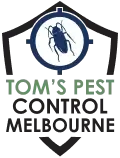Prompt, Affordable Same-Day Pest Control in Melbourne – From $129.
- Home
- Pest Treatments
- Termite Inspection & Treatment
- Ant Pest Control
- Bed Bug Treatment
- Beetle Pest Control
- Bird Proofing
- Borer Pest Control
- Cockroach Control
- Flea Treatment
- Fly Control
- Fox Trapping
- Mites Control
- Mosquito Pest Control
- Moth Control
- Possum Removal Service
- Rodent Control
- Silverfish Treatment
- Spider Control Treatment
- Wasp Control Services
- End of Lease Pest Control
- Commercial Pest Control
- Office Pest Control
- Restaurants & Cafes Pest Control
- Hospitality Pest Control
- Education Facilities Pest Control
- Hospital & Aged Care Pest Control
- Pest Control Food Industry
- Factories & Warehouses Pest Control
- Government Buildings Pest Control
- Assets & Facilities Pest Management
- Farming and Agriculture Pest Control
- Strata Pest Control
- Construction Pest Control
- Termites
- Pest Info
- Pest Inspections
- Contact
- Home
- Pest Treatments
- Termite Inspection & Treatment
- Ant Pest Control
- Bed Bug Treatment
- Beetle Pest Control
- Bird Proofing
- Borer Pest Control
- Cockroach Control
- Flea Treatment
- Fly Control
- Fox Trapping
- Mites Control
- Mosquito Pest Control
- Moth Control
- Possum Removal Service
- Rodent Control
- Silverfish Treatment
- Spider Control Treatment
- Wasp Control Services
- End of Lease Pest Control
- Commercial Pest Control
- Office Pest Control
- Restaurants & Cafes Pest Control
- Hospitality Pest Control
- Education Facilities Pest Control
- Hospital & Aged Care Pest Control
- Pest Control Food Industry
- Factories & Warehouses Pest Control
- Government Buildings Pest Control
- Assets & Facilities Pest Management
- Farming and Agriculture Pest Control
- Strata Pest Control
- Construction Pest Control
- Termites
- Pest Info
- Pest Inspections
- Contact
Dampwood Termites
Home » Termite Facts & Identification » Dampwood Termites
What is Dampwood Termites?
Dampwood termites are a species of the Termopsidae family. Also known as ‘rotten wood’ termites, these pests are found in areas with high moisture content and wood decay. Hence, it is common to see these termites in fallen logs, tree stumps, and decaying wood found in buildings and fences.
Identification
Dampwood termites are bigger than other termite species. They have a creamy white to brownish colour and measure between ½ inch to 5/8 inch in length. These termites are long, narrow, and oval and have 6 legs.
The soldiers of this termite specie have a flattened brown head with long and dark mandibles. Their alates are dark brown and have four pairs of brown wings equal in length. Nymphs of this species are cream coloured with spotted patterns on the abdomen.
This termite species undergoes incomplete metamorphosis. Their life cycle includes 3 stages: egg, nymph, and adult. The first two stages last for about a month each, and their adulthood can last from one to several years.
A pair of alates or winged termites begin a new colony by making a chamber inside a suitable piece of wood and producing eggs there. Usually, termite colonies are small; however, if the condition is favourable, the colonies grow exponentially.
Dampwood termites are very intentional in their choice of location for a colony. These members of the isoptera family prefer damp and decaying woods, hence their name. Given that condition is satisfied, they will use fallen branches and logs, stumps of trees – even partially buried wood objects – as the foundation for their home.
As their presence can quickly render timbers dangerous for structural use or even inhabitation, it is important to keep an eye out for any signs of dampwood termite activity and take action swiftly if necessary.
All termite species feed upon cellulose found in plants. In addition, this specie feeds on moist, decaying wood and other cellulose materials. They attack wooden furniture in properties in search of food. Dampwood termites also eat other termite species or the injured members of their colony for survival.
Prevention Tips
Eliminate moisture
As dampwood termites like moisture, it is essential to solving all moisture problems in your property. This includes fixing leaking roofs, plumbing issues, rainwater drainage problems, etc.
Replace damaged wood
Once you fix moisture issues, it is crucial to replace any damaged wood in your home. If the need is, use treated wood.
Behaviour
Dampwood termites do not damage artificial structures extensively, as drywood termites do. However, they can weaken the structures of your home by eating and hollowing out support beams. If ignored for too long, dampwood termites may give you costly repair work. Also, since they stay well hidden in properties, their activities may be easier to spot once the effects are severe.
Signs of Infestation
If you’re finding yourself with a dampwood termite infestation in your home, there are a few tell-tale signs to look out for. You could find that wings have been shed by the insects – these wings will look identical aside from the size difference between the pairs. In addition to this, you may notice ejected wood pellets or faecal pellets which match the colour of the eaten wood.
These additional signs can be quite advantageous in identifying that an infestation is present. If you do encounter any of these indicators, it may be beneficial to contact an experienced termite exterminator as soon as possible in order to resolve the issue before any further damage is done
Termite Control
At Tom’s Pest Control, we understand the dangers posed by dampwood termites, and hence our highly experienced team deploys various methods to protect your property from these pests.
Dampwood termite control may involve soil treatments with termiticides, exclusion techniques like caulking or sealing entry points, and other preventative measures. In some cases where infestations have become severe, fumigation may be necessary.
Dampwood termites can cause substantial damage to wood structures and furniture, so you must contact Tom’s Pest Control in Melbourne immediately if you suspect an infestation. We will assess the situation and recommend treatments tailored to your specific needs. With the right approach, these pests can be controlled and prevented from causing further destruction.
Call Us Now
Contact our professional pest control experts today to discuss your property’s best termite control option.
Frequently Asked Questions
How Serious is the Dampwood Termite Issue?
Dampwood termites can weaken your homes by hollowing out the support beams. Their presence on your property can give you costly repairs. Since these termites have a silent and secretive nature, it may be easier for you to determine their presence once they cause severe damage to your structure. To hide, these termites do not build mud tubes. Instead, they use their faeces to cover up their entry holes.
What Attracts These Termites to Your Property?
Wood that is moist or on the ground can attract dampwood termites. Other things that can bring these termites to your property are stumps, lumber, fallen logs and tree branches that are in contact with the ground. In some cases, these termites may also infest areas impacted by roof leaks or broken drainpipes.
How to Prevent Dampwood Termites from Entering Your Property?
To discourage dampwood termites, you must eliminate moisture sources by diverting water away from the property’s foundation. It would help if you immediately repaired leaking faucets and water pipes to prevent these pests. Store firewood at least 20 feet away from your property. Also, you must reduce humidity in your home by ventilating crawl spaces, attics, and basements.

